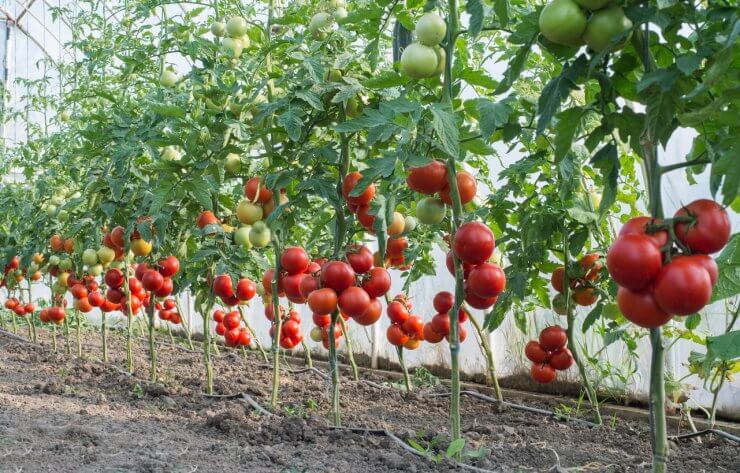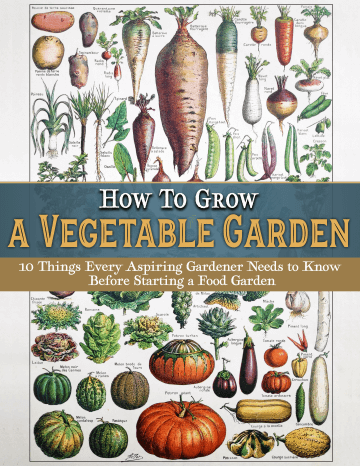
I grew up on the North side of Sacramento, which, to the best of my knowledge, was then, and still is the tomato capital of the United States. Back then, my suburban neighborhood was still surrounded by family farms ranging from 10 to 50 acres, and it was in this close-knit community that I had my paper route. Every morning at around 6 AM, I would deliver the Sacramento Union to about 80 people, one of whom was Mr. Joe Kelly.
Mr. Kelly was known for being a generous tipper, and I always looked forward to collecting my monthly fee from him. One sunny spring afternoon, I knocked on Mr. Kelly’s door as I usually did. He greeted me warmly, paid me promptly, and then paused, looking thoughtful. He asked if I would be interested in doing some work on the weekend, helping him with his spring tomato patch.
Discover 10 top tips for growing, harvesting, and enjoying fruits, vegetables, herbs and more from your home garden—when you access the FREEBIE How to Grow a Vegetable Garden, right now!
I was taken aback by the offer, as I had never done any commercial gardening work before, let alone with tomatoes. I had helped my father out with our small home garden and had done a lot of landscaping work, mostly mowing yards, including mine, and some of the neighbors. I voiced my inexperience to Mr. Kelly, but he assured me that he had plenty of knowledge and experience to share. With that promise and a bit of curiosity, I agreed to give it a try.
The following Saturday morning, after completing my paper route, I arrived at Mr. Kelly’s doorstep bright and early at 8 AM, ready to tackle the tomato patch. To my surprise, Mr. Kelly had already prepared the ground. He had created 12 neat rows about 5 feet apart, each row stretching for about 60 feet.
Mr. Kelly explained our task for the day: we would plant the tomato seedlings about 5 feet apart, inserting each small plant between wooden stakes with heavy duty metal stakes at the end of each row. Eventually, twine would stretch between the stakes to support the plants as they grew. It was hard, physical labor, and it took us about four hours to hammer in all of the metal and wooden stakes. By midday, I was thankful when Mrs. Kelly arrived with bologna sandwiches and cool lemonade for our lunch break.
In the afternoon, we began planting. Mr. Kelly handed me the young indeterminate tomato plants, each about 6 inches tall, and instructed me on how to place them in the soil properly. We surrounded each tiny seedling with mulch, which Mr. Kelly explained would keep the weeds at bay and help the ground retain moisture.
As the day came to a close, I couldn’t help but marvel at the peculiar sight of massive metal and wooden stakes surrounding the fragile, green seedlings. It was a stark contrast, but Mr. Kelly assured me that in a few months, those seedlings would grow into a lush tomato patch.
Over the following weeks, I dropped by the tomato patch now and then to watch the plants grow and to see how Mr. Kelly used twine to support the rapidly growing tomato vines. By mid-summer, the plants were nearly as tall as me and laden with tomatoes of all shapes and sizes.
On a few Saturday mornings, I lent a hand in harvesting the tomatoes, working alongside Mr. Kelly and his wife. After the harvest, Mr. Kelly would always give me a small bag of ripe tomatoes to take home. It was a gesture that never failed to make my parents ecstatic, as they immediately incorporated the fresh tomatoes into our dinner plans. Even with our own backyard garden, my parents were always happy to have more tomatoes.
Years later, I can still flip back and forth between the image of that field filled with tiny seedlings and the end result: a vibrant jungle of green tomato plants bursting with bright red fruit. The tomatoes were undeniably fantastic, and it was during those days that my father introduced me to the simple yet delicious pleasure of a beefsteak tomato sandwich, made with two slices of San Francisco sourdough bread, a thick tomato slice sprinkled with salt and pepper, and a generous helping of mayonnaise.




